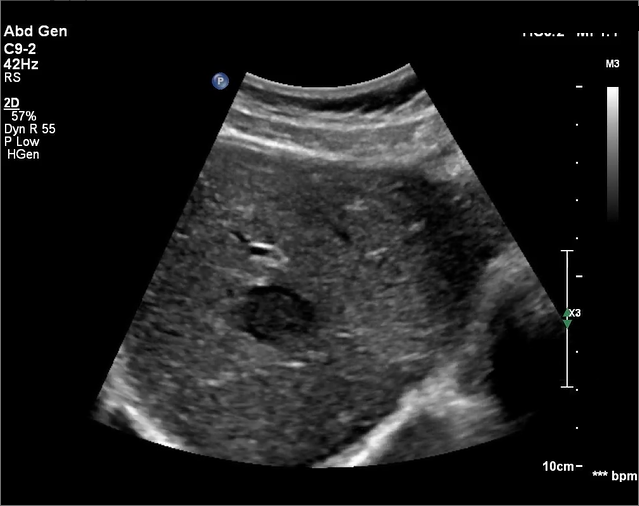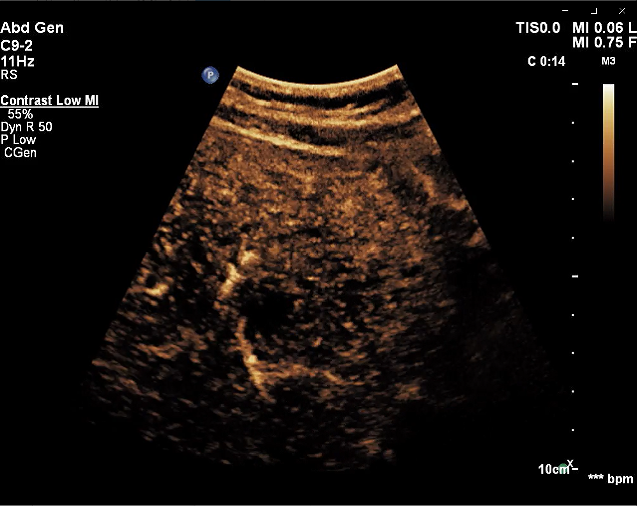liver metastasis
Liver metastases are the most frequent malignancies of the liver. The grayscale sonographic appearance of metastases varies: they can be hypoechoic, hyperechoic, they can present a peripheral halo, and they can have an infiltrative or cystic appearance. On contrast enhanced ultrasound (CEUS), in the arterial phase, liver metastases can be hyperenhancing or hypoenhancing. Liver metastases present wash-out in the portal and late phases, a typical enhancement pattern.
After intravenous ultrasound – contrast administration the lesion shows moderate contrast uptake in comparison to the liver parenchyma . Slight wash-out in the late phase was observed.
Diagnosis: Due to the contrast uptake a haemorrhage renal cyst could be excluded, afterwards the patient underwent biopsy and an oncozytoma was confirmed.




